
A landscape designer can elevate your outdoor space and bring your vision to life. Use this landscape design cost guide to budget for your next project.
A greener home, for less green


It seems like every day your Instagram friends add a new, lush plant in their homes, while that shelf under your window remains bare—not for lack of interest, but because plants can be so expensive. Even with a shoestring budget, however, you can create a mini jungle in your home by searching for these 12 inexpensive and easy-to-care-for houseplants.
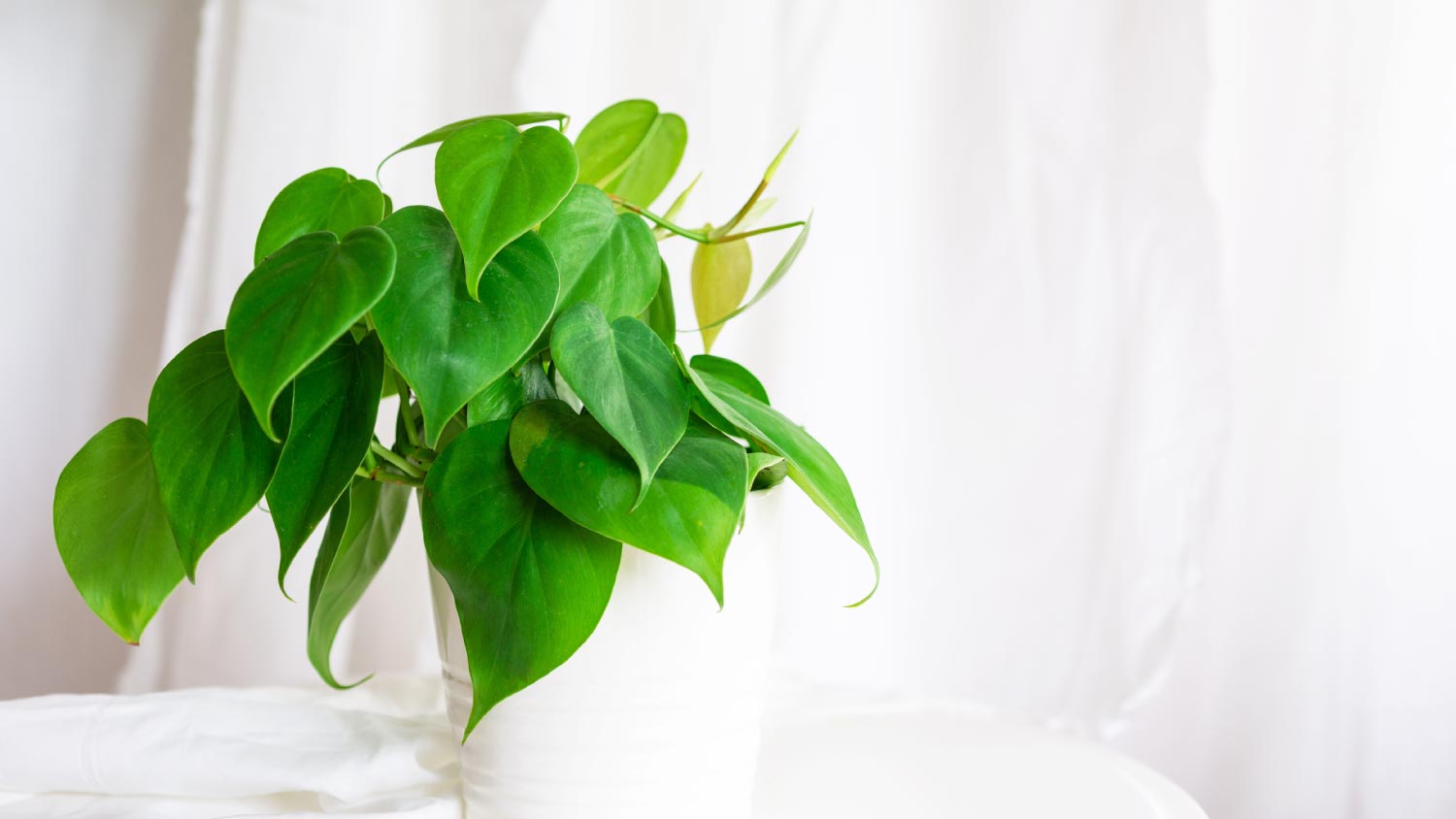
Botanical name: Philodendron scandens
Cost: $20 and up
Sunlight: Indirect light
Soil: Add some perlite to the soil for better drainage, use tepid water, and let the soil dry between waterings
The Heartleaf Philodendron is one of the more common varieties of philodendron (of which there are over 400), which keeps the price down. As its name suggests, it is known for its heart-shaped leaves. This plant is easy to care for and can thrive in a range of conditions.
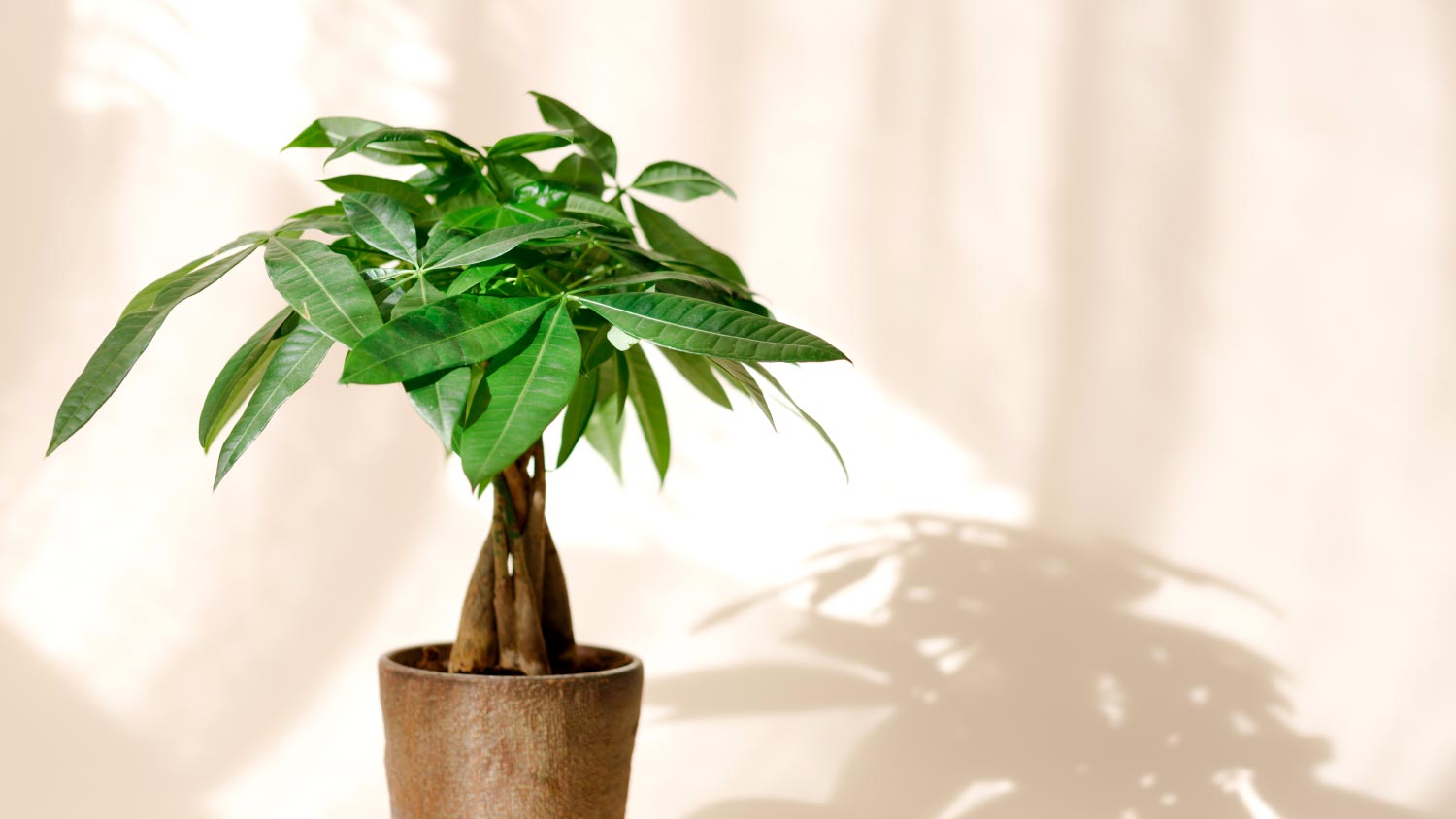
Botanical name: Pachira aquatica
Cost: $10–$30 for a smaller, starter plant
Sunlight: Medium to bright indirect light
Soil: Use a peat moss-based mixture, and water whenever the top inch of soil is dry
According to the ancient practice of feng shui, a money tree brings good luck in the form of wealth and abundance. These plants are originally from Central and South America and prefer humidity, so increase its moisture level by misting it, adding a small humidifier nearby, or placing it on a pebble tray.
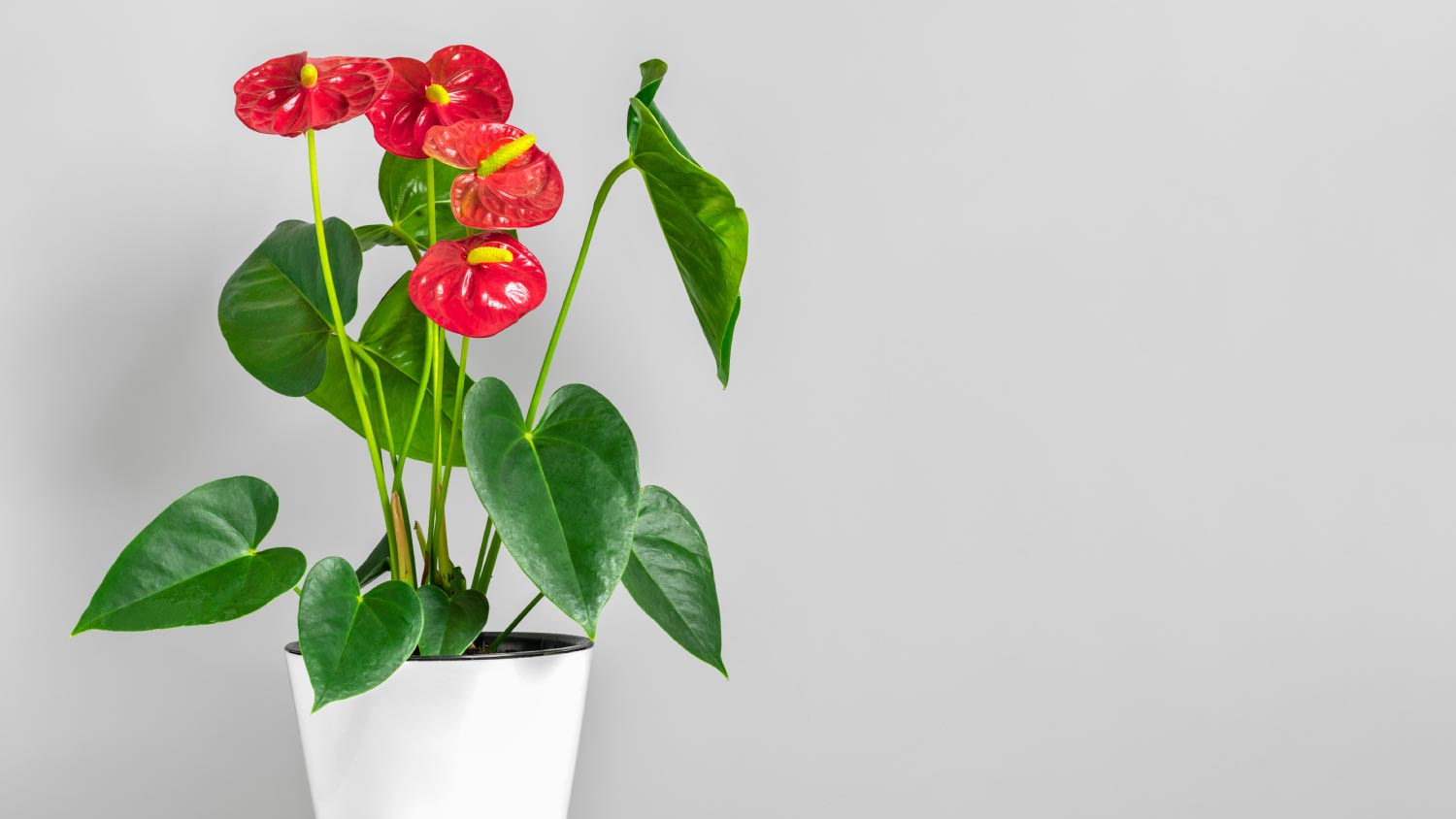
Botanical name: Anthurium spp
Cost: As low as $12 for a 4-inch plant
Sunlight: Indirect light; bright indirect light will help support flower growth
Soil: Use a half-and-half mix of perlite and potting soil; only water when soil is dry to the touch
In its natural environment, Anthurium grows on other plants instead of soil. Given this, it may need a garden stake for support.
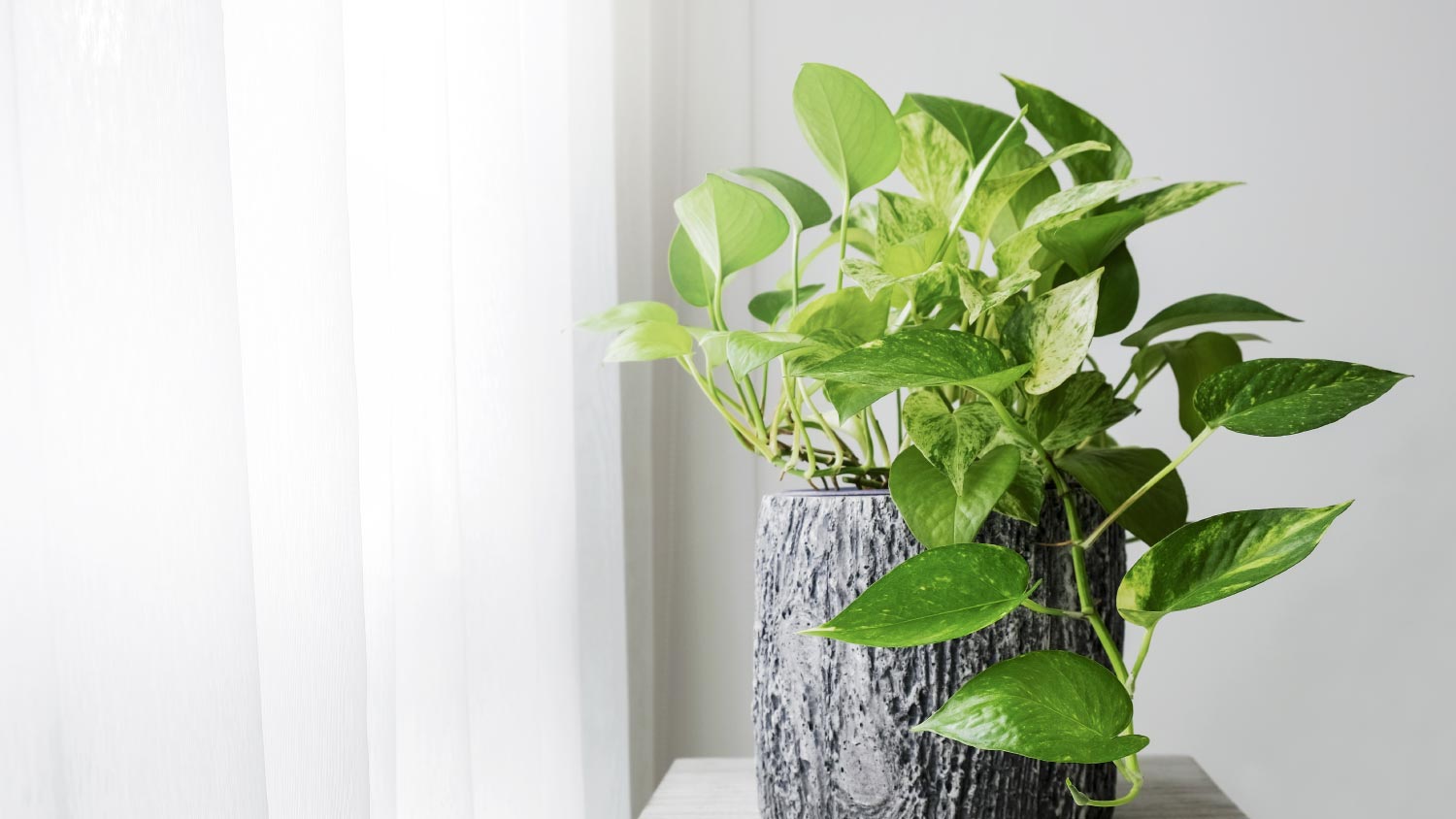
Botanical name: Epipremnum aureum
Cost: Starts around $12
Sunlight: Prefers bright, indirect light, but can tolerate lower-lighting conditions
Soil: A potting mix with a little perlite or lava rocks mixed in is preferred; water every 1–2 weeks, when the soil dries out
There are several varieties of pothos plants, but the golden pothos is one of the most common, known for its green and yellow variegated leaves. And because you don’t have to water this plant often, it’s super easy to care for.

Botanical name: Dracaena trifasciata
Cost: $4–$45
Sunlight: Shade or partial sun
Soil: Prefers a sandy soil low in peat; soil must dry out between waterings. In winter, this hardy plant may only need water once per month.
You may have spotted these plants in offices or other low-light spaces, as they are known for being very resilient and almost impossible to kill. That said, it likes a warm environment so make sure to place it somewhere it doesn’t get too drafty. But pet parents should take note: snake plants are toxic to fur babies.

Botanical name: Aloe vera
Cost: $10–$50 depending on size
Sunlight: Partial sun
Soil: Use a succulent potting mix and let it dry out between waterings
Aloe is known for its medicinal properties; cut the leaves and use the cooling juice to treat minor cuts and burns. While it is a succulent, too much direct sunlight can cause it to dry out. It prefers pots made from terracotta or other porous materials.

Botanical name: Spathiphyllum spp.
Cost: $15–$50 for a 6-inch potted plant
Sunlight: Partial sun
Soil: Use a well-draining, all-purpose potting soil and keep it moist
The Peace Lily makes a statement with its elegant white flowers and is happiest with filtered bright light. A tropical plant that grows on the forest floor, it can grow up to 16 inches tall. Sensitive to chemicals, use filtered water to hydrate this flowering plant, and don’t bring it into your home if you have cats or dogs—it’s poisonous to pets, and can cause nausea, vomiting, and more.
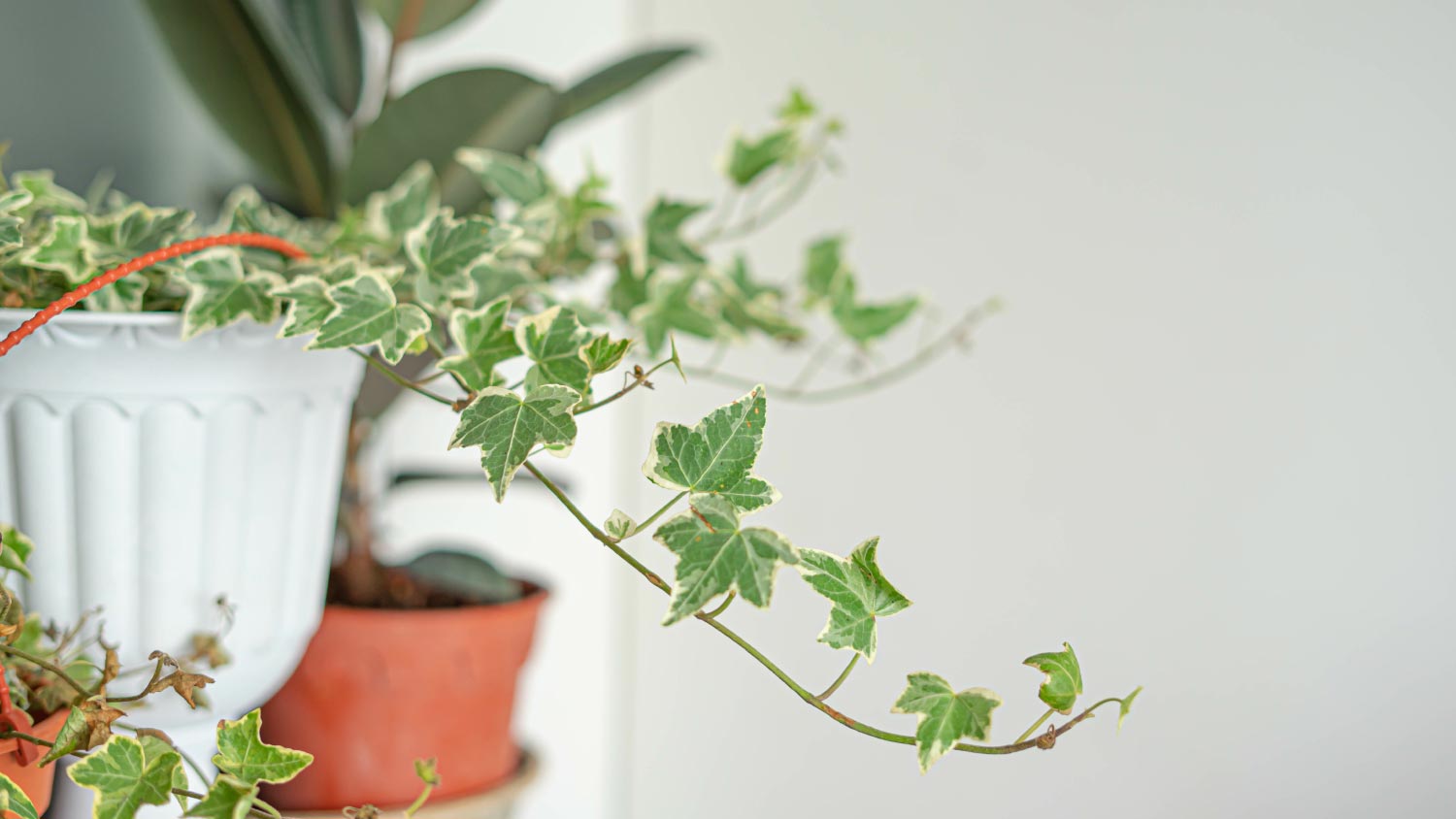
Botanical name: Hedera helix
Cost: Starts at $5
Sunlight: Partial to full shade
Soil: Most all-purpose potting soils should be fine. English Ivy plants like moist (but not soggy) soil, and enjoy a misting.
You’ve likely seen English Ivy growing on Tudor homes or in photographs of historic buildings in England. In the U.S., this climbing vine is better suited inside than out, as it is considered invasive; in fact, the state of Oregon outlawed the sale of the plane.
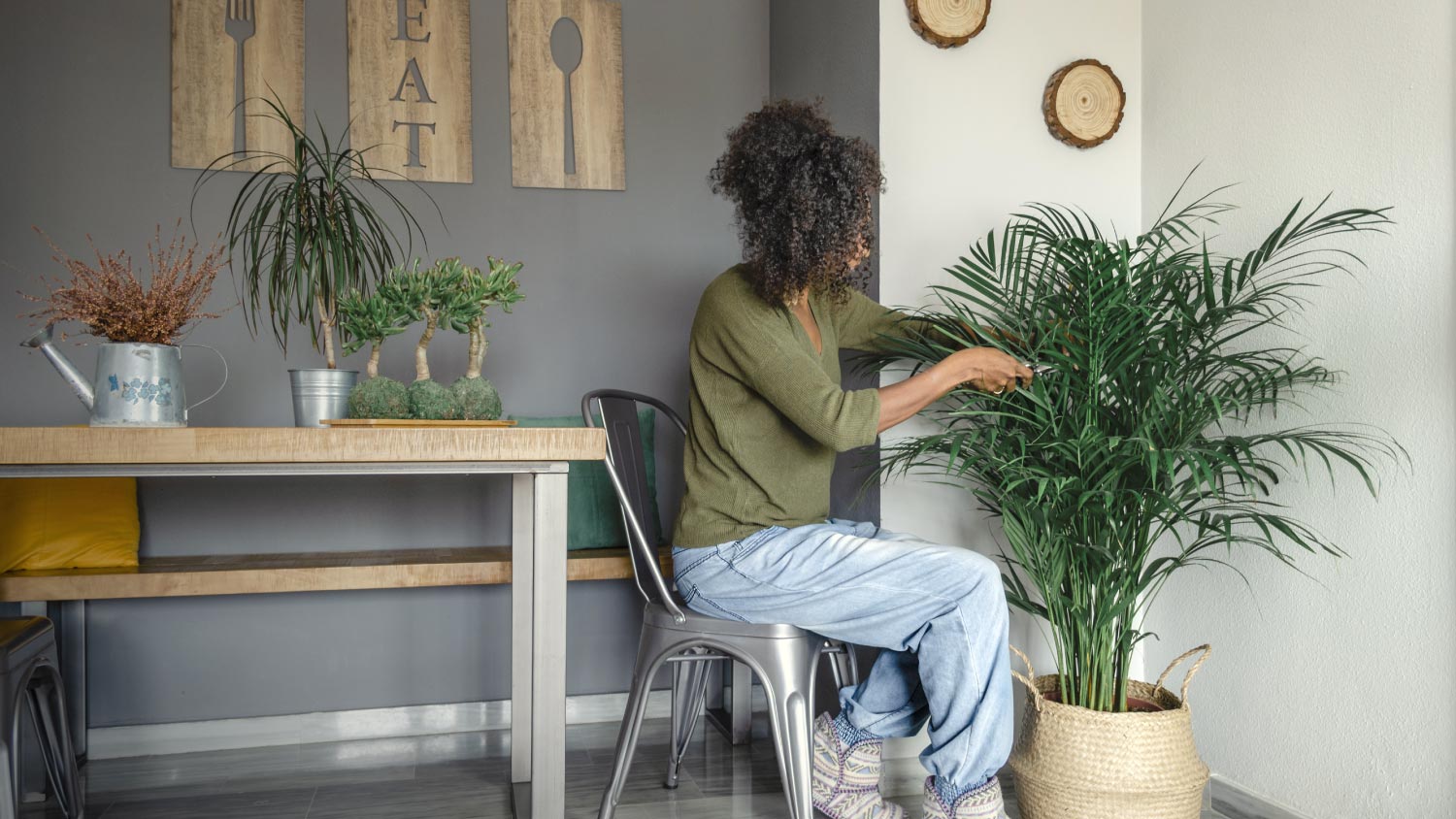
Botanical name: Chamaedorea seifrizii
Cost: Smaller plants can be found for $30–$50
Sunlight: Low to bright indirect light
Soil: Use porous, humus-rich soil. Keep the soil moist but allow the plant to drain and the top of the soil to dry between waterings.
If you’re looking for a tall plant, a bamboo palm is an excellent choice. Its name is a bit misleading; it has nothing to do with bamboo! They love humidity so keep them near a humidifier or add a pebble tray.
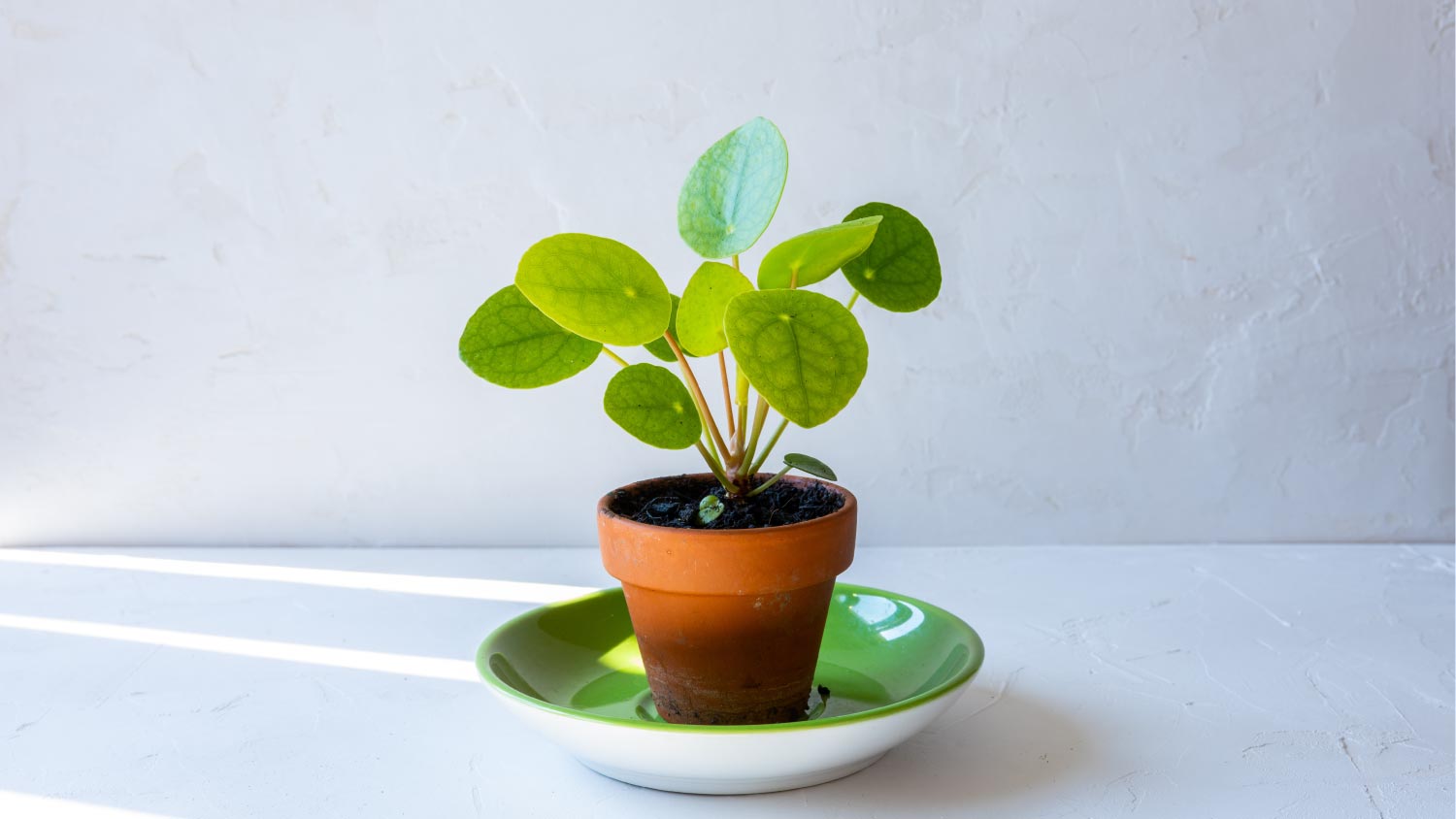
Botanical name: Pilea peperomioides
Cost: 4-inch plants start around $12–$15
Sunlight: Bright, indirect light
Soil: Use a well-draining potting soil, and plant in a pot with drainage holes. The soil should be mostly dry before rewatering.
Originating in the Yunnan province of China, the Chinese Money Plant has large round leaves that look like coins. They can accumulate dust, so be sure to give the leaves a gentle wipe every now and then.
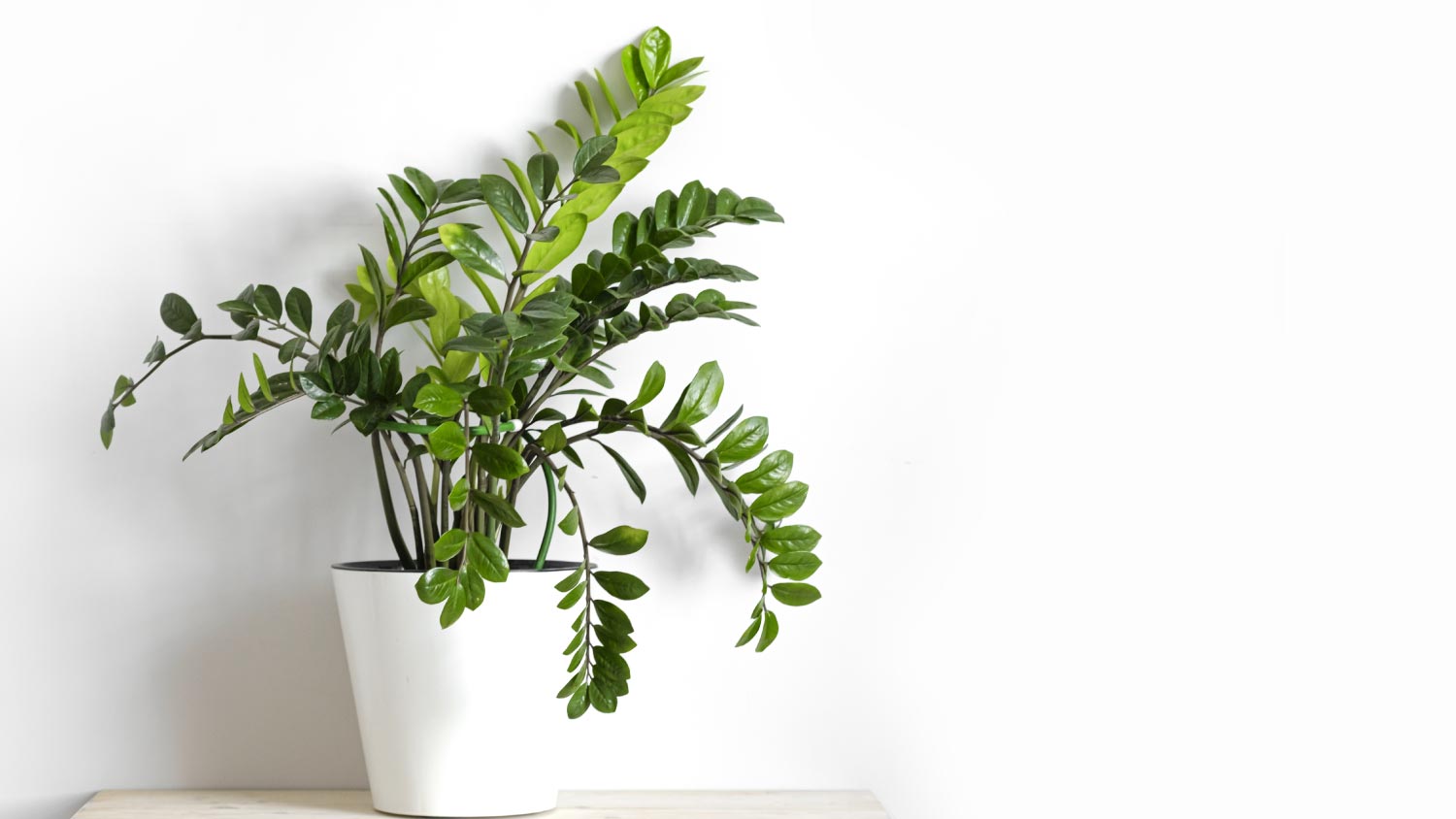
Botanical name: Zamioculcas zamiifolia
Cost: 4-inch pots can be found for $8–$10
Sunlight: Low, indirect light or partial shade is fine, though they thrive in bright, indirect light
Soil: All-purpose potting soil is fine, as long as it is well-draining. The ZZ Plant is drought-tolerant and generally doesn’t need to be watered more than once every two weeks.
The ZZ plant is hardy and easy to care for. Native to Eastern Africa, it can handle all kinds of conditions though it doesn’t love the cold, so keep it away from drafty areas.
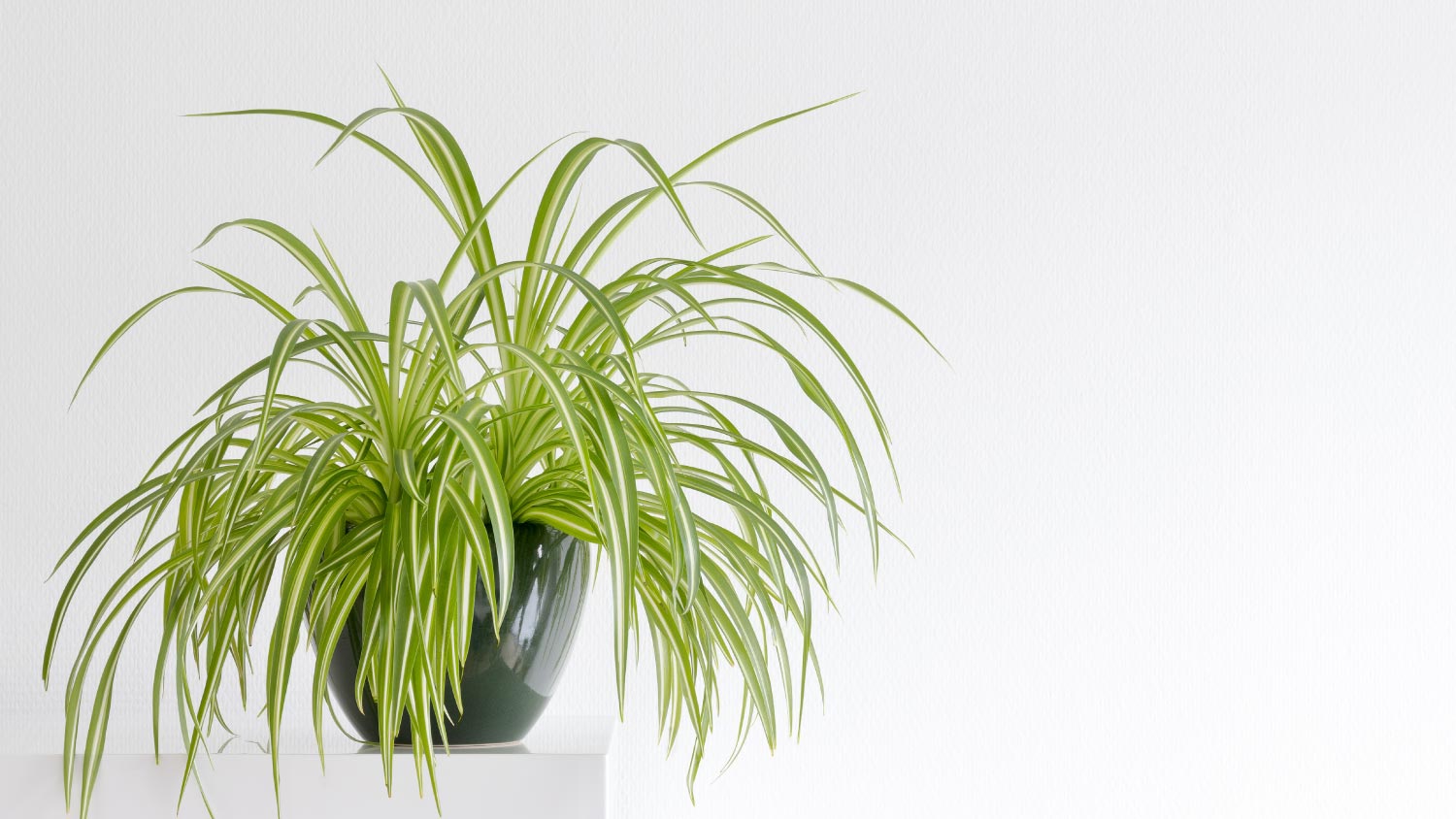
Botanical name: Chlorophytum comosum
Cost: $10–$25
Sunlight: Bright, indirect light
Soil: Use a soil-based, well-draining potting mix. Keep the soil moist during spring and summer when it is warmer outside; otherwise, water occasionally.
Spider plants can handle a lot of neglect, making them great for plant newbies. In springtime, when there is more sunlight, they will produce spiderettes—flowers that become mini spider plants to plant in other pots, so they’re a natural, wallet-friendly, BOGO plant to have around.
From average costs to expert advice, get all the answers you need to get your job done.

A landscape designer can elevate your outdoor space and bring your vision to life. Use this landscape design cost guide to budget for your next project.

Growing plants with a hydroponic gardening water system can be a big investment. To know how much it costs to build a hydroponic garden, consider the system, technology, size, and whether you hire a pro. This guide will help calculate costs.

The cost to remove a boulder depends on the size, location, and equipment needed. Learn the average boulder removal cost and how to save money on removal.

Digging up a bush can be difficult, and trimming it down won’t prevent it from coming back. So, what kills bushes instantly? Find out more.
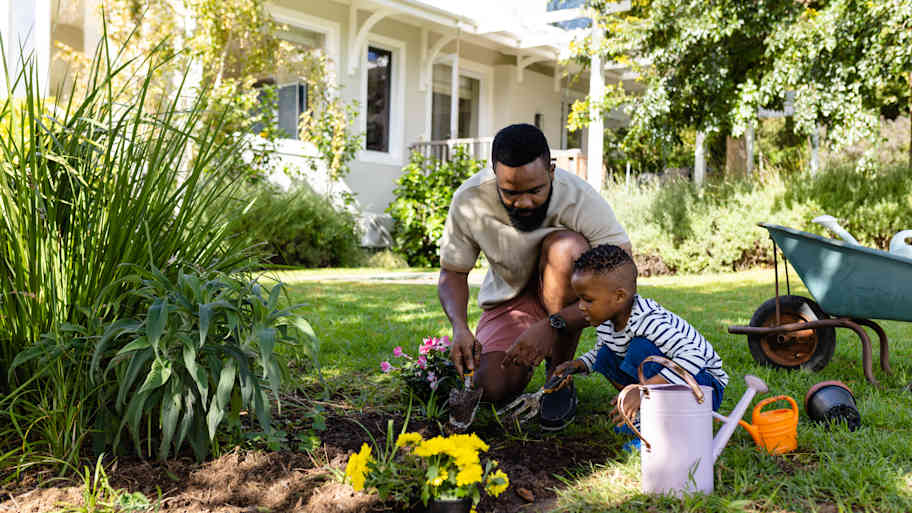
While similar, comparing dirt versus soil comes down to what's inside the material, its usefulness, and how it performs, depending on how you intend to use it.
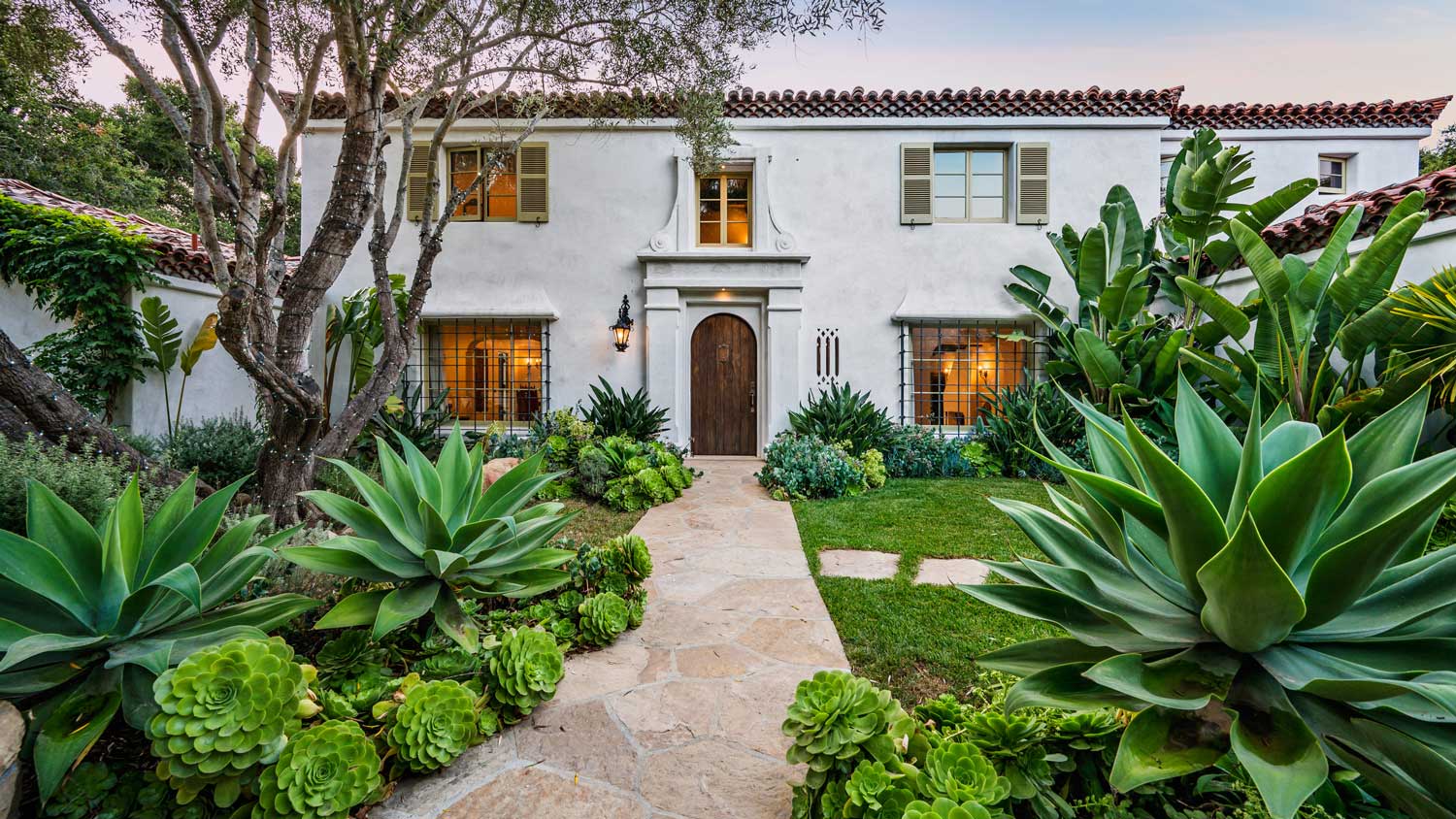
What is the name of someone who designs landscaping? A landscape architect creates stunning, functional outdoor spaces with expert design skills.